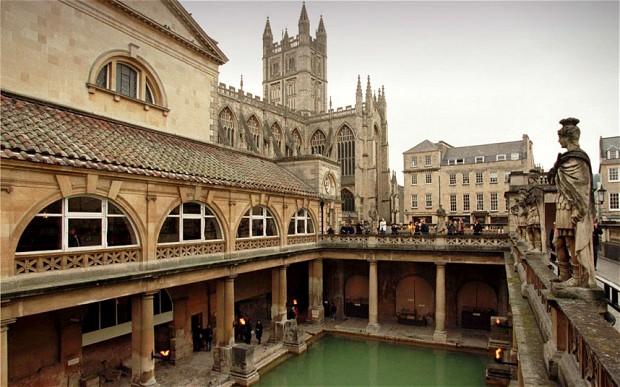Ancient Roman Springs To Heat Bath Abbey

words by Carol King
England’s Bath Abbey will use Ancient Roman drains to channel 45C spring water to provide under-floor heating to the medieval church.
The city of Bath in Somerset, southwest England is a World Heritage Site and Bath Abbey is a Grade I listed building. People have worshipped on the site for at least 2,000 years, which was deemed sacred because of the neighbouring hot spring. In c. 60AD, an Ancient Roman settlement, including baths and a temple, developed around the spring.
Ambitious plans drawn up by local architectural practice Feilden Clegg Bradley Studios will harness and channel water using the Roman drains to meet the 21st century challenge of reducing carbon emissions. Currently, water from the ancient drains pours into the River Avon. Architects intend to capture the natural resource by excavating crypts beneath Bath Abbey and divert the warm water from the drains via a network of pipes to provide the church with an under-floor heating system.
The £18 million renovation and expansion of Bath Abbey will enable the biggest transformation of the church’s facilities in more than 150 years. Bath Abbey is the most important and largest listed building in Bath. Works are scheduled to be completed by 2017.
Three different churches have occupied the site of today’s Abbey: there was an Anglo-Saxon Abbey Church from 757 to 1066 that was pulled down by the Norman conquerors of England; a Norman cathedral was begun c. 1090 but was in ruins by the late 15th century; and the present Abbey church was founded in 1499 and completed in 1611. In the 1830s, new pinnacles and flying buttresses were added to the exterior and inside. From 1864 to 1874, the inside of the Abbey was transformed to the Victorian Gothic style.
You may also be interested in...
Latest property in Italy
370 m²
7 Bedrooms
279000
66 m²
2 Bedrooms
179000
210 m²
4 Bedrooms
135000
270 m²
4 Bedrooms
0
200 m²
2 Bedrooms
185000












